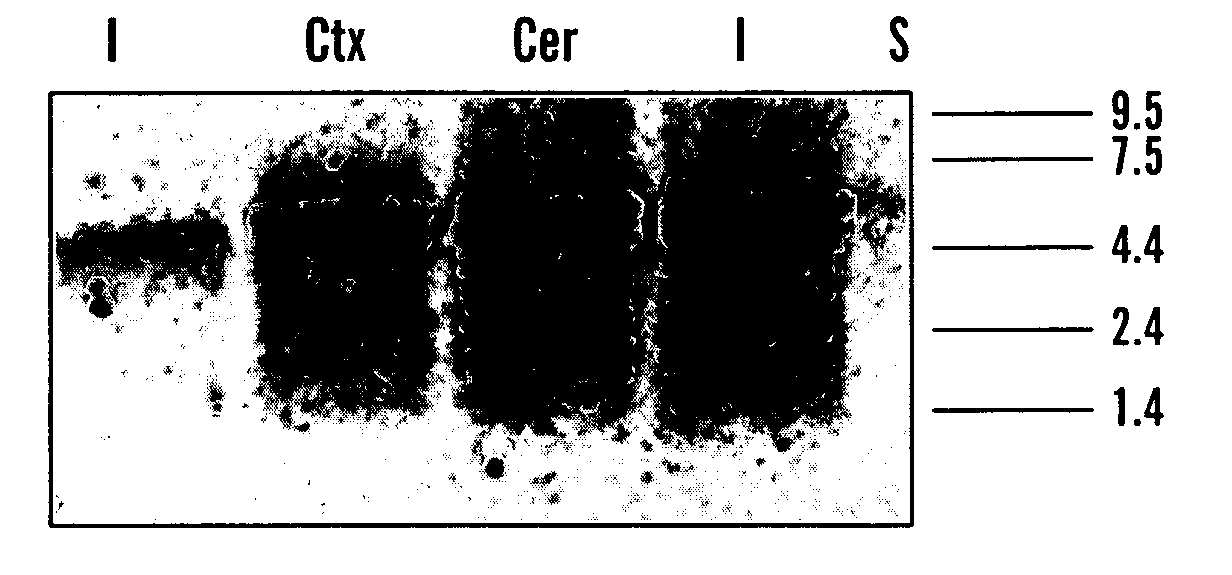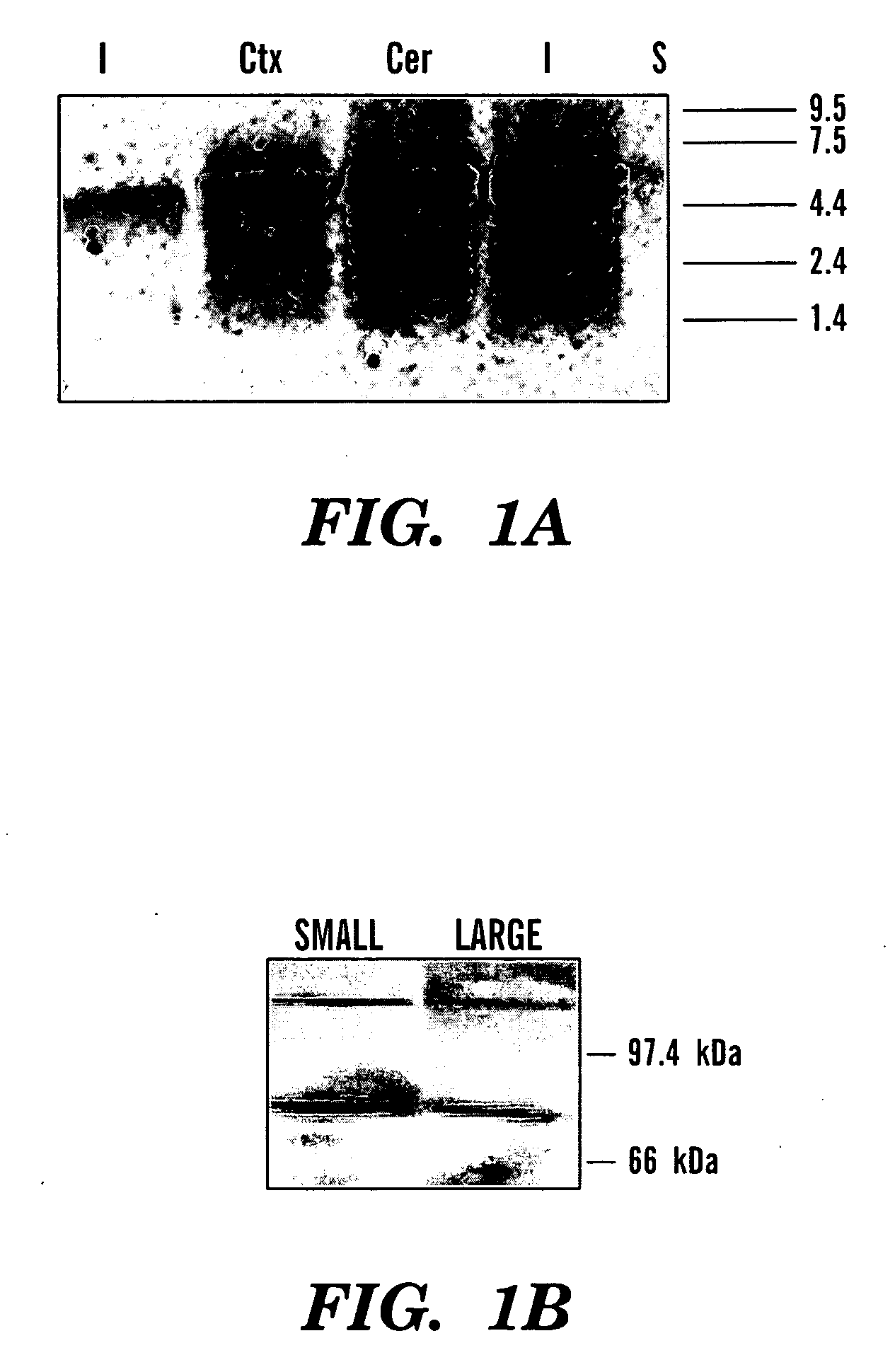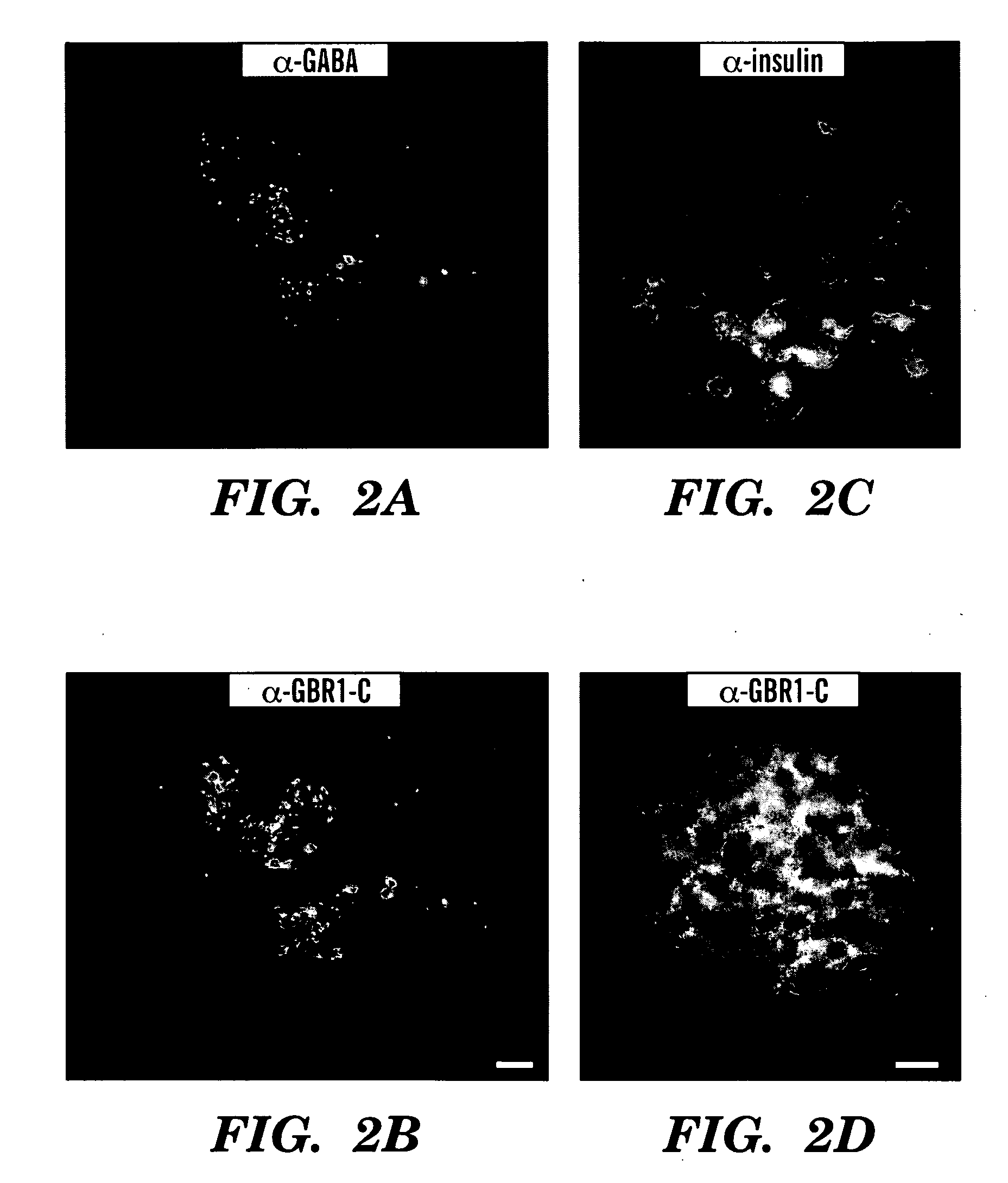Use of gaba and gabab agonists
a technology of gabab and receptor, which is applied in the field of gabab receptor agonists, can solve the problems of low insulin level which would normally prevent lipolysis and cytogenesis, no cure for iddm or niddm, and difficulty in maintaining proper dosage of insulin during the half-life, so as to achieve the effect of treating diabetes
- Summary
- Abstract
- Description
- Claims
- Application Information
AI Technical Summary
Benefits of technology
Problems solved by technology
Method used
Image
Examples
examples
GABAB Receptor mRNAs Expressed in Islets
[0105]Using primers designed from the sequence of GBR1 isolated from rat brain, reverse-transcription, polymerase chain reaction was used to amplify GBR1 receptor transcripts from polyA+-mRNA purified from islet tissue (FIG. 1A). Several variants were identified: a full-length GBR1a identical to that cloned from rat brain21, a variant lacking exon 6 (a portion of the agonist binding pocket20), and three variants similar to GBR1e that code for a long, extracellular ligand binding N-terminal but lack membrane spanning domains24. One of the truncated islet variants contains a 63 base insert that is unique to islets.
[0106]To further establish the presence of GABAB receptor transcripts in islets, a *bp region from the 5′ end of GBR1 cDNA was labeled and used as a probe in Northern blot analysis. This probe hybridized to an islet mRNA approximately 5 kb in size, similar to that of the full-length GBR1a transcript found in rat cortex and cerebellum (...
PUM
| Property | Measurement | Unit |
|---|---|---|
| diameter | aaaaa | aaaaa |
| diameter | aaaaa | aaaaa |
| diameter | aaaaa | aaaaa |
Abstract
Description
Claims
Application Information
 Login to View More
Login to View More - R&D
- Intellectual Property
- Life Sciences
- Materials
- Tech Scout
- Unparalleled Data Quality
- Higher Quality Content
- 60% Fewer Hallucinations
Browse by: Latest US Patents, China's latest patents, Technical Efficacy Thesaurus, Application Domain, Technology Topic, Popular Technical Reports.
© 2025 PatSnap. All rights reserved.Legal|Privacy policy|Modern Slavery Act Transparency Statement|Sitemap|About US| Contact US: help@patsnap.com



